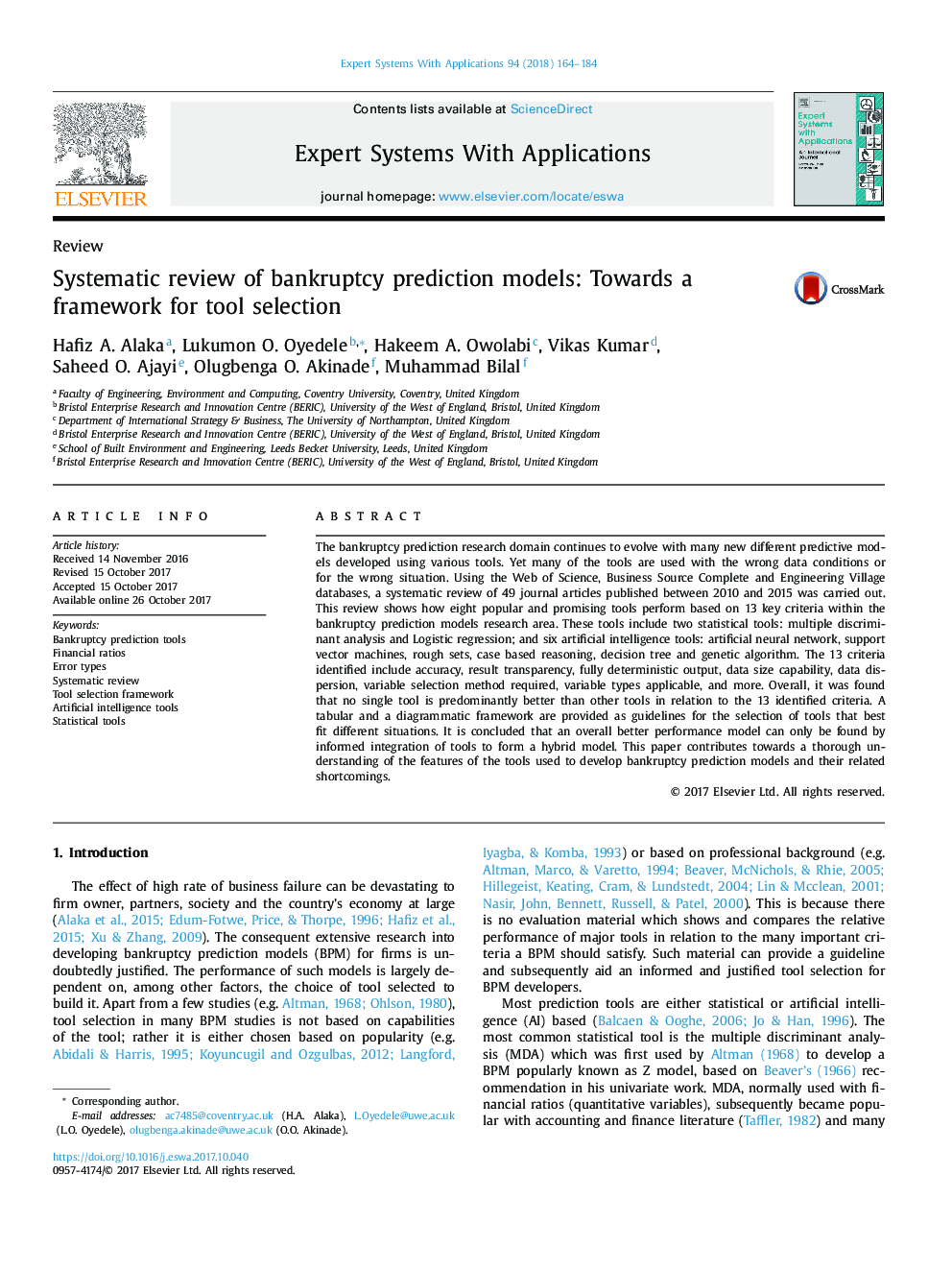| Article ID | Journal | Published Year | Pages | File Type |
|---|---|---|---|---|
| 6855342 | Expert Systems with Applications | 2018 | 21 Pages |
Abstract
The bankruptcy prediction research domain continues to evolve with many new different predictive models developed using various tools. Yet many of the tools are used with the wrong data conditions or for the wrong situation. Using the Web of Science, Business Source Complete and Engineering Village databases, a systematic review of 49 journal articles published between 2010 and 2015 was carried out. This review shows how eight popular and promising tools perform based on 13 key criteria within the bankruptcy prediction models research area. These tools include two statistical tools: multiple discriminant analysis and Logistic regression; and six artificial intelligence tools: artificial neural network, support vector machines, rough sets, case based reasoning, decision tree and genetic algorithm. The 13 criteria identified include accuracy, result transparency, fully deterministic output, data size capability, data dispersion, variable selection method required, variable types applicable, and more. Overall, it was found that no single tool is predominantly better than other tools in relation to the 13 identified criteria. A tabular and a diagrammatic framework are provided as guidelines for the selection of tools that best fit different situations. It is concluded that an overall better performance model can only be found by informed integration of tools to form a hybrid model. This paper contributes towards a thorough understanding of the features of the tools used to develop bankruptcy prediction models and their related shortcomings.
Related Topics
Physical Sciences and Engineering
Computer Science
Artificial Intelligence
Authors
Hafiz A. Alaka, Lukumon O. Oyedele, Hakeem A. Owolabi, Vikas Kumar, Saheed O. Ajayi, Olugbenga O. Akinade, Muhammad Bilal,
